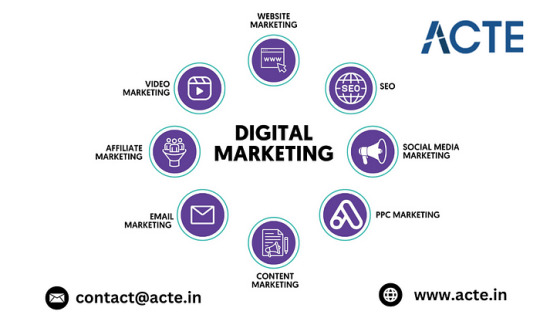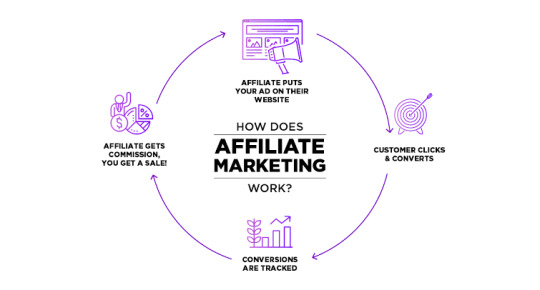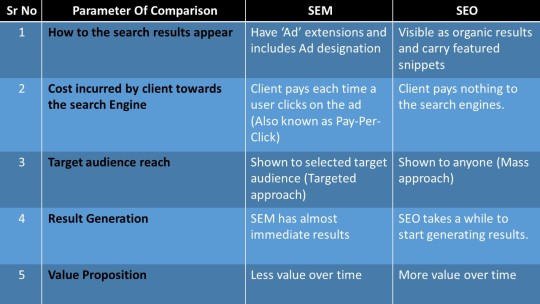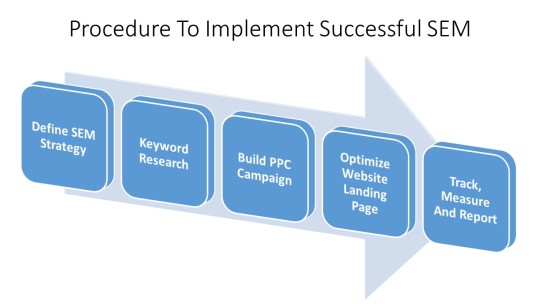#A Step-by-Step Guide to Optimizing Your Organization’s Digital Marketing Budget
Explore tagged Tumblr posts
Text
A Step-by-Step Guide to Optimizing Your Organization’s Digital Marketing Budget

Introduction to Digital Marketing Budgeting
As the world of marketing becomes increasingly digital, it’s more important than ever to have a solid understanding of how to budget for your organization’s digital marketing efforts. This can be a daunting task, but luckily there are some helpful tips and tricks that can make the process a bit easier.
In this section, we’ll cover the basics of digital marketing budgeting, including what you should consider when creating your budget and how to allocate your funds across different channels. We’ll also provide some helpful resources that you can use to make sure your budget is on track.
Creating a Digital Marketing Budget
When creating a budget for your digital marketing efforts, there are a few key things to keep in mind. First, you’ll need to identify your goals and objectives. What are you hoping to achieve with your digital marketing campaigns? Once you have a clear idea of your goals, you can begin to allocate funds accordingly.
It’s also important to consider your target audience when crafting your budget. Who are you trying to reach with your campaigns? What kinds of strategies are likely to resonate with them? Taking the time to answer these questions will help you create a more effective and efficient budget.
Finally, don’t forget to factor in the costs associated with each channel or tactic you’re planning to use. Make sure you have a realistic estimate of what it will cost to execute your campaigns before finalizing your budget.
What is Your Digital Marketing Strategy?
Digital marketing is the process of creating, managing, and executing a marketing plan that uses digital channels to reach and engage customers. The key to success with a digital marketing strategy is to create a plan that aligns with your business goals and then use data and analytics to measure and improve your results over time.
The first step in creating a digital marketing strategy is to define your target audience. Once you know who you want to reach, you can begin developing a plan to engage them. There are many different digital channels available, and the best way to reach your target audience will vary depending on who they are and what they’re interested in. Some common channels include:
Website: Your website is the foundation of your digital marketing strategy. It’s important to make sure it’s optimized for search engines and conversion so that people can easily find and learn more about your organization.
Social media: Social media platforms like Facebook, Twitter, and LinkedIn are great ways to connect with potential and current customers. Use these platforms to share helpful content, answer questions, and build relationships.
Email: Email is a powerful tool for staying in touch with customers and prospects. Use email newsletters, automated drip campaigns, or one-to-one messages to keep people engaged with your brand.
Paid advertising: Paid advertising can be a great way to reach new people who may be interested in your products or services.
Identifying Your Digital Marketing Goals and Objectives
As the first step in optimizing your digital marketing budget, you’ll need to take a close look at your organization’s goals and objectives. What are you hoping to achieve with your digital marketing efforts?
Are you looking to increase brand awareness? Drive more traffic to your website? Generate more leads? Convert more leads into customers?
Once you have a clear understanding of your goals, you can begin to develop a plan for how to best allocate your resources.
If brand awareness is your primary goal, for example, you’ll want to focus on strategies that will get your name and message in front of as many people as possible. This might include investing in online advertising or partnering with influencers who can help promote your brand.
On the other hand, if generating leads is your main objective, you’ll want to invest in strategies that will drive traffic to your website and capture visitor information. This might include developing a strong SEO strategy or creating high-quality content that encourages people to sign up for your email list.
No matter what your goals are, it’s important to clearly identify them before starting any digital marketing initiative. By doing so, you’ll be able to develop a plan that is aligned with your overall business objectives and ensures that your marketing budget is being spent in the most effective way possible.
Developing a Digital Marketing Budget
Assuming that your organization already has a marketing budget in place, there are a few steps you can take to optimize it for digital marketing purposes.
Review your current marketing budget and performance metrics. This will give you a baseline to work from as you develop your digital marketing budget. Be sure to identify any areas where you feel like you could be doing more with less.
Research the cost of various digital marketing tactics. There is a wide range of options available, so it’s important to compare pricing and find the most cost-effective solution for your needs.
Create a realistic plan for implementing digital marketing tactics within your budget. This should include a timeline and specific goals for each tactic. Make sure to allow for some flexibility in case certain tactics prove to be more successful than others.
Monitor your digital marketing performance regularly and adjust your budget accordingly. Be prepared to invest more in successful tactics and scale back on those that aren’t performing as well as you’d hoped.
By following these steps, you can ensure that your organization’s digital marketing budget is being used effectively and efficiently.
Allocating Your Digital Marketing Budget
When it comes to allocating your digital marketing budget, there are a few key things to keep in mind. First, you need to make sure you have a clear understanding of your goals and objectives. What are you looking to achieve with your digital marketing efforts? Once you know this, you can start to allocate your budget based on what will best help you reach those goals.
Next, you need to consider your target audience. Who are you trying to reach with your digital marketing? Once you know this, you can start to allocate your budget based on the channels that will reach them most effectively. For example, if you’re trying to reach millennials, Facebook and Instagram may be more effective than traditional channels like television or print ads.
Finally, you need to consider your ROI when allocating your digital marketing budget. What is your return on investment for each channel? Make sure you are allocating your budget in a way that will give you the best return on investment for your specific goals.
By keeping these things in mind, you can develop a well-rounded digital marketing budget that will help you achieve your specific goals and objectives.
Measuring Your Digital Marketing Performance
As a marketer, you are always looking for ways to optimize your budget and get the most out of your marketing spend. One way to do this is to measure your digital marketing performance.
There are a number of metrics you can use to measure your digital marketing performance, including:
-Website traffic -Leads generated –Conversions -Cost per lead -ROI
By tracking these metrics, you can see which digital marketing activities are working and which ones aren’t. This allows you to make adjustments to your budget and ensure that you are getting the most bang for your buck.
Optimizing Your Digital Marketing Budget
As organizations increasingly look to digital channels to reach their target audiences, it’s more important than ever to optimize your digital marketing budget. Here are a few tips to help you get the most out of your digital marketing spend:
Define your goals and objectives. What are you hoping to achieve with your digital marketing efforts? More website traffic? More leads? More sales? Once you know what you want to achieve, you can allocate your budget accordingly.
Research your target audience. Who are you trying to reach with your digital marketing campaigns? Knowing who your target audience is will help you determine which channels they’re most likely to be using, and how best to reach them.
Consider allocating a portion of your budget to paid advertising. Paid advertising can be a great way to reach a large audience quickly and generate results fast. However, it’s important to keep in mind that paid advertising is just one piece of the puzzle – make sure you’re also investing in other areas like content marketing and social media outreach.
Track and measure your results. Not all digital marketing efforts will pay off immediately – some may take months or even years to generate results. That’s why it’s important to track your progress over time and continually adjust your strategies based on what’s working (and what’s not). By taking a data-driven approach, you can ensure that you’re getting the most bang for your buck when it comes to digital marketing.
Conclusion
In conclusion, optimizing your organization’s digital marketing budget is an important part of running a successful business. By following the steps outlined in this article, you can effectively allocate your funds to maximize ROI and ensure that you are getting the most value for every dollar spent on digital marketing. With sound planning and strategic implementation, your organization will be well equipped to reach its goals and take advantage of new opportunities in the ever-evolving world of digital marketing.
#A Step-by-Step Guide to Optimizing Your Organization’s Digital Marketing Budget#mobile app development#web design#web development#app development#web devlopment#digital marketing#webzguru#app devlopment#webdevelopment#software devlopment company#webdesign#advertising#architecture#black and white
0 notes
Text
Choosing the Right Digital Marketing Services: A Comprehensive Guide
Digital marketing is highly effective in the modern era as it is simplifying marketing and optimizing results. On the other hand, among such a tremendous number of digital marketing channels, one may find it difficult to select the tools that fit their needs. Nevertheless, it is important that selection process is well-organized and correctly applied so as to help you to pick up an digital marketing agency that is best suited for your business. Find out below for the steps that you should take when choosing, among others, digital marketing services.
Define Your Goals
Make sure that a strategic marketing plan will address your goals before seeing the light of day. This can be done through engaging content or brand building, increasing visits on the website, or leads generation. Those determining factors have to be set before the process of decision making starts.
Assess Your Budget
The cost for digital marketing services is also variable and within a given range, before you can select your service, you need to have a look at your budget. Figure out your funding level for marketing campaigns and distribute the amount as appropriate.
Research Thoroughly
Take your time not just to single out the choice of an agency randomly. Consider looking into various service providers to get an in-depth understanding by reading reviews and appraising the way they have performed. Seek organizations with the expertise in your business line and that perfect record of achievement.
Evaluate Services Offered
Moreover, not each agency providing an online service focus on the same thing. Some are SEO thesis statement experts while others develop an expertise in social media marketing or pay-per-click advertising. Identify what your business requires before selecting a marketing agency that provides the services that are aligned to your objectives.
Consider Industry Expertise
By being fluent in current industry trends, we can do a great job at digital marketing. This implies that your business may fall within a certain agency's scope of expertise. They will be knowledgeable of your audience’s nature; hence, they will know how to communicate with them i a more relevant way.
Seek Personalized Solutions:
Try to avoid common ‘one-size-fits-all’ approaches to digital marketing processes. Look for organizers of strategies which will be customized by you according to your business goals and specific target group.
Following these pointers, you can journey thoughtfully the path of selecting the appropriate digital marketing services. Remember that choosing the proper marketing campaigns can be critical in achieving the desired goals.
#Digital Marketing Agency#Digital Marketing Services#Digital Marketing#SEO#Social Media#Brampton#Canada
3 notes
·
View notes
Text
A Comprehensive Guide to Developing Custom E-Commerce Websites in 2024

In the dynamic landscape of web commerce development, building a custom e-commerce website has become essential for businesses seeking to establish a strong online presence and drive sales. As we navigate through 2024, the demand for unique, user-friendly, and feature-rich e-commerce platforms continues to grow. In this comprehensive guide, we'll explore the key steps and considerations involved in developing custom e-commerce websites, with insights from Xettle Technologies, a leading provider of innovative web commerce solutions.
Define Your Objectives and Requirements: The first step in developing a custom e-commerce website is to define your objectives and requirements. Consider factors such as your target audience, product range, business goals, and budget. Are you looking to create a sleek and modern storefront, or do you require advanced features such as inventory management, order tracking, and customer accounts? By clearly outlining your needs, you can ensure that your e-commerce website is tailored to meet your specific requirements.
Choose the Right E-commerce Platform: Selecting the right e-commerce platform is crucial for the success of your online store. Evaluate the features, scalability, customization options, and pricing of different platforms to find the one that best suits your needs. Popular options include WooCommerce, Shopify, Magento, and BigCommerce, each offering unique advantages depending on your business size and requirements. Xettle Technologies offers expertise in various e-commerce platforms and can assist you in selecting the ideal solution for your business.
Design a User-Centric Interface: The design of your e-commerce website plays a significant role in attracting and retaining customers. Aim for a clean, intuitive, and mobile-responsive interface that enhances the user experience. Incorporate high-quality images, clear navigation menus, and prominent calls-to-action to guide visitors through the purchasing process. Consider usability testing and feedback from real users to refine your design and optimize conversion rates. Xettle Technologies specializes in creating user-centric e-commerce interfaces that captivate audiences and drive engagement.
Implement Secure Payment Gateways: Security is paramount in e-commerce transactions to instill trust and protect sensitive customer information. Integrate secure payment gateways that comply with industry standards and encryption protocols, such as SSL/TLS encryption and PCI DSS compliance. Offer a variety of payment options, including credit cards, digital wallets, and alternative payment methods, to accommodate customer preferences. Xettle Technologies provides robust payment gateway integration services, ensuring seamless and secure transactions for your e-commerce website.
Optimize for Search Engines: To maximize visibility and drive organic traffic to your e-commerce website, it's essential to optimize it for search engines. Conduct keyword research, optimize product descriptions and metadata, and implement on-page SEO best practices to improve your website's ranking in search engine results pages (SERPs). Additionally, consider implementing structured data markup to enhance the visibility of your products in search engine listings. Xettle Technologies offers SEO services tailored to e-commerce websites, helping you achieve higher search engine rankings and attract qualified traffic.
Enable Analytics and Tracking: Track and analyze user behavior, sales performance, and website metrics to gain valuable insights into your e-commerce operations. Implement analytics tools such as Google Analytics or Adobe Analytics to monitor website traffic, conversion rates, and customer engagement. Utilize this data to identify opportunities for optimization, refine your marketing strategies, and enhance the overall performance of your e-commerce website. Xettle Technologies integrates advanced analytics and tracking capabilities into custom e-commerce websites, empowering businesses to make informed decisions and drive growth.
Ensure Scalability and Flexibility: As your business grows, your e-commerce website should be able to scale and adapt to accommodate increasing traffic and evolving requirements. Choose a flexible and scalable architecture that can support future growth and expansion. Regularly update and maintain your website to ensure optimal performance, security, and compatibility with emerging technologies. Xettle Technologies offers scalable web commerce development solutions that grow with your business and adapt to changing market dynamics.
In conclusion, developing a custom e-commerce website requires careful planning, strategic execution, and ongoing optimization. By defining your objectives, choosing the right platform, designing a user-centric interface, implementing secure payment gateways, optimizing for search engines, enabling analytics and tracking, and ensuring scalability and flexibility, you can create a successful online store that drives sales and enhances customer satisfaction. Partnering with a trusted provider like Xettle Technologies can help you navigate the complexities of web commerce development and achieve your e-commerce goals in 2024 and beyond.
2 notes
·
View notes
Text
Winning Strategies for Digital Marketing: a Step-by-step Guide for Beginners and Experts

In the modern age, digital marketing reigns supreme as the linchpin of effective marketing. Businesses today must navigate the expansive online landscape to reach their desired audience, establish brand recognition, and drive conversions. In this article, we’ll delve into the most effective methods for conquering the realm of digital marketing and achieving extraordinary success.
1. Search Engine Optimization (SEO)
SEO serves as the cornerstone of any triumphant digital marketing endeavour. It encompasses the art of optimizing your website to secure higher rankings in search engine results, thus simplifying the process of attracting potential customers. To excel in SEO:
Keyword Exploration: Unearth relevant keywords that resonate with your target audience.
High-Quality Content Creation: Craft informative, engaging content that satiates user intent.
On-Page SEO Refinement: Enhance meta tags, headings, and website architecture.
Mobile Optimization: Ensure your website is mobile-responsive to guarantee a seamless user experience.
2. Content Marketing
Content reigns supreme in the digital realm. Formulating compelling, informative content empowers you to engage with your audience, cultivate authority within your niche, and stimulate organic traffic. Effectual content marketing involves:
Blogging Brilliance: Regularly publish informative blog posts.
Video Mastery: Create captivating video content.
Infographics Impact: Visual content often garners substantial shares.
eBooks and Guides: Provide valuable resources to your audience.
3. Social Media Marketing
Social media platforms thrive as bustling hubs of activity, rendering them ideal for reaching out to and engaging with your audience. Leveraging social media effectively entails:
Platform Picking: Concentrate your efforts on platforms most pertinent to your audience.
Consistent Cadence: Uphold a regular posting schedule.
Audience Interaction: Respond promptly to comments and messages.
Paid Promotion: Ponder running targeted advertisements for greater reach.
4. Email Marketing
Email marketing persists as a potent tool for nurturing leads and retaining customers. To excel in this realm:
Segmentation Savvy: Dispatch targeted content to distinct segments.
Personalization Prowess: Tailor emails to individual recipients.
Automation Advancements: Utilize automation to dispatch relevant messages at the opportune moment.
A/B Testing: Experiment with subject lines, content, and dispatch times.

5. Pay-Per-Click (PPC) Advertising
PPC advertising, exemplified by Google Ads, empowers you to bid on keywords and showcase advertisements in search engine results and on websites. Flourishing in PPC involves:
Keyword Quest: Identify high-performing keywords.
Compelling Ad Copywriting: Craft enticing ad copy to allure clicks.
Landing Page Enhancement: Ensure that your landing pages align with the ad content.
Budget Management: Scrutinize and tweak your ad expenditure to maximize return on investment.
6. Influencer Marketing
Harness the potential of influencers in your field to amplify your reach and enhance your credibility. Contemplate the following:
Influencer Identification: Collaborate with influencers whose audience aligns with your target demographic.
Authentic Alliances: Encourage influencers to generate authentic, relatable content.
Explicit Guidelines: Ensure influencers grasp your brand’s values and messaging.
7. Analytics and Data Insights
Data serves as your guiding compass in the realm of digital marketing. Employ tools such as Google Analytics to:
Monitor Website Traffic: Gain insights into the origins and behaviors of your visitors.
Conversion Scrutiny: Measure the triumph of your marketing campaigns.
Audience Revelation: Attain a deeper understanding of your audience’s demographics and preferences.
A/B Testing: Continuously refine your strategies based on data-driven revelations.
Mastery of digital marketing entails harmonizing these strategies in alignment with your business objectives and target audience. Keep in mind that the digital landscape is ever-evolving, necessitating your vigilance in keeping abreast of the latest trends and technologies for sustained triumph.
If you’re looking to kickstart your digital marketing journey with expert guidance, consider ACTE Technologies, a leading institute that offers comprehensive digital marketing courses. Their experienced instructors can equip you with the skills and knowledge needed to thrive in the world of digital marketing.
#digital marketing tools#what is digital marketing#marketing#digital marketing#digital marketing strategies
4 notes
·
View notes
Text
Make Money From Affiliate Marketing: A Step-by-Step Guide
Introduction:
Are you looking for a way to make money online? Affiliate marketing might be the answer you've been searching for! In this digital age, affiliate marketing has emerged as a popular business model that allows individuals to earn passive income by promoting other people's products or services and earning a commission for each sale or referral. Not only does it offer a flexible and scalable income stream, but it also requires minimal startup costs. In this comprehensive guide, we'll walk you through the steps to get started, making money with affiliate marketing.
I. Understanding Affiliate Marketing

Affiliate marketing is a performance-based marketing strategy where affiliates (you) promote products or services of merchants in exchange for a commission. It operates on a simple principle: you find a product you believe in, promote it to others, and earn a percentage of the profit from each sale you generate. The key players in affiliate marketing include merchants who create and sell the products, affiliates who promote them, and consumers who make purchases.
There are different types of affiliate programs, such as pay-per-click (PPC), where you earn a commission for each click on your affiliate link; pay-per-lead (PPL), where you earn a commission for each lead generated; and pay-per-sale (PPS), where you earn a commission for each sale made through your referral.
II. Getting Started with Affiliate Marketing
Choose a niche: Select a niche that aligns with your interests and expertise. This will make it easier for you to create valuable content and connect with your target audience.
Research affiliate programs: Find reputable affiliate programs through popular affiliate networks like Amazon Associates, ClickBank, Digistore24, or Commission Junction. You can also explore direct partnerships with merchants in your niche.
Select profitable products: Look for products or services that have high demand and good conversion rates. Consider factors such as commission structure, product quality, and the merchant's reputation.
III. Building Your Affiliate Marketing Platform

Create a website or blog: Set up a dedicated platform where you can promote affiliate products. Choose a domain name, register hosting, and build your website using platforms like WordPress or Wix.
Content creation: Create valuable and engaging content that appeals to your target audience. Write blog posts, product reviews, and tutorials that provide useful information and insights related to the products you promote.
SEO optimization: Optimize your website for search engines by using relevant keywords, creating meta tags, and building quality backlinks. This will help improve your website's visibility and attract organic traffic.
IV. Promoting Affiliate Products

Social media marketing: Leverage the power of social media platforms to promote your affiliate products. Create compelling posts, engage with your audience, and use relevant hashtags to expand your reach.
Email marketing campaigns: Build an email list of subscribers interested in your niche. Send regular newsletters, product updates, and exclusive offers to your subscribers to cultivate a loyal audience and boost affiliate sales.
Paid advertising: Consider using paid advertising channels like Google Ads or social media ads to reach a broader audience. Set a budget, target specific demographics, and track the performance of your ads to optimize your results.
V. Maximizing Affiliate Earnings

Build trust and credibility: Establish trust with your audience by being transparent and honest in your product recommendations. Provide genuine reviews, personal experiences, and valuable insights to build credibility.
Conversion optimization: Optimize your affiliate marketing efforts by using persuasive copywriting techniques, creating compelling calls-to-action, and designing effective landing pages. Continuously test and refine your strategies to improve your conversion rates.
Tracking and analytics: Track the performance of your affiliate links using analytics tools like Google Analytics or affiliate network dashboards.This will provide valuable insights into the effectiveness of your promotional efforts, allowing you to make data-driven decisions and optimize your affiliate marketing strategy.
VI. Scaling Your Affiliate Business

Diversifying income streams: Explore different affiliate programs and niches to diversify your sources of income. By promoting a variety of products or services, you can reach a wider audience and potentially increase your earnings.
Outsourcing and automation: As your affiliate business grows, consider outsourcing tasks and automating processes to free up your time for strategic growth. Delegate tasks like content creation, social media management, or email marketing to virtual assistants or freelancers.
Building an affiliate team: Collaborate with other affiliates or influencers in your niche to create an affiliate team or network. By pooling resources and leveraging each other's audiences, you can expand your reach and increase your affiliate sales.
Conclusion:
Are you ready to take control of your financial future and achieve true freedom? If you're tired of the daily grind and want to unlock the potential of affiliate marketing, then the Freedom Asselator course is your key to success.
Are you constantly feeling trapped by the limitations of your 9-to-5 job? Do you dream of a life where you can work on your own terms, from anywhere in the world? The Freedom Asselator course is designed to help you break free from the shackles of traditional employment and embark on a journey towards financial independence.
Imagine waking up each day with the freedom to choose how you spend your time. No more commuting in rush hour traffic or answering to a demanding boss. With the Freedom Asselator course, you'll gain the knowledge and tools to build a thriving affiliate marketing business and create a life of freedom and abundance.
Are you unsure of where to start in the world of affiliate marketing? Do you need guidance on how to choose the right niche, find reputable affiliate programs, or effectively promote products? The Freedom Asselator course provides you with step-by-step instructions, insider tips, and proven strategies to help you navigate the affiliate marketing landscape with confidence.
We understand the problems and challenges that aspiring affiliate marketers face. That's why the Freedom Asselator course goes beyond generic advice and offers personalized support and mentorship. Our experienced instructors will be there to answer your questions, provide feedback, and guide you on your journey to success.
Don't let fear or uncertainty hold you back any longer. Take the leap towards financial freedom and enroll in the Freedom Asselator course today. Join a community of like-minded individuals who are committed to achieving their dreams and transforming their lives through affiliate marketing.
Remember, the choice is yours. Will you continue to settle for a life that leaves you unfulfilled and financially constrained? Or will you take action, invest in yourself, and unlock the door to unlimited potential and freedom?
Click the link below to learn more about the Freedom Asselator course and start your journey towards financial liberation today. Your dreams are waiting for you!
Enroll in the Freedom Asselator course now and unlock your path to financial freedom!
#affiliate marketing tips#make money online#Affiliate#digital marketing#mobile marketing#affiliate marketing
3 notes
·
View notes
Text
Search Engine Marketing (Sem) Guide

With the numerous upgradations in the field of digital marketing, a constant question that revolves around the mind of advertisers and marketers is what exactly is Search Engine Marketing.
What is Search Engine Marketing (SEM)?
Search engine marketing is about boosting visibility on the various search engines like Google, Yahoo, and Bing with paid tactics. For most businesses, ranking highly in search results isn’t luck, in fact, it is a result of massive efforts in one or both categories of search marketing. You must be wonder one or both? What are these? We mean SEO and SEM, both sound similar but are actually poles apart. Let’s understand both these search marketing terms by distinguishing them on the bases of some vital parameters.

Thought both SEM and SEO work differently for your organization their aims are similar. a. They help a brand to come up on the search results page. b. They are designed to drive traffic on your website. c. Thay use the baton of keywords to uncover popular search terms. d. Towards the end of both these search marketing tactics, tracking and testing will be required in order to optimize your search strategy for the future.
The next thing you need to know about Search Engine Marketing is, its different synonyms. Initially, Search Engine Optimization (SEO) and Paid Search Activities came under the Search Engine Marketing (SEM) umbrella. With digital marketing developments, SEM solely refers to paid search. SEM is also known as Paid search ads, Paid search advertising, PPC (pay-per-click), PPC (pay-per-call), CPC (cost-per-click) and CPM (cost-per-thousand impressions).
Procedure To Implement Successful SEM:

1. Define SEM Strategy: Before you kick start your SEM campaign, you must define a strategy. What would that include? You start by defining your target audience and identify their needs and motivations. Only when your product or service can give a solution to their troubles or needs is when your product or service will work. Alongside this, you can also search for your competitors and check their market position. Lastly, your organization would need to identify important goals and benchmarks like search ranking, website traffic, sales, and other important ROI metrics.
2. Keyword Research: The next step is not just to select the relevant keyword phrases, but also to chase for the keywords that your target audiences frequently search for. This procedure is similar while you perform On-page SEO. Optimize keywords with low competition and high usage. Your keyword search doesn’t end here, you should conduct brainstorm sessions with your target audience to know the popular terms that they utilize while searching for the kind of product and services that you offer. Constantly interacting with your loyal customer, sales and customer service representative is like a cherry on the cake to stay in touch with the frequently used phrases. You can also use various keyword research tools to generate your initial keyword list and then build on it.
3. Build PPC Campaigns: Paid Search Engine Marketing is one of the most vital parts of today’s Search Marketing Strategy. You should aim to chase and bid on the most relevant keywords. To run a successful Pay-Per-Click (PPC) campaign, you need to pay heed upon the following checklist: a. Budget per Month b. Budget per Day c. Scope of Geotargeting d. List of Keywords
4. Optimize Website Landing Page: Bagging quality inbound links is directly proportional to the popularity of your website in the eyes of search engines. This brings us to a critical role of the marketers to build links to their website from valued links of other sites that your targeted visitors frequently visit. It is equally important to design unique website content that is link-worthy. You should also try to get links from business partners, trade associations, vendors and customers. Distributing press releases and publishing blogs online is another tactic of Search Engine Marketing to fetch links.
5. Track, Measure And Report: Tracking and Measuring the success of your SEM campaign is one of the most important Search Engine Marketing strategies. This not only helps to get a pulse of how successful the campaign us but also how we can alter or improvise elements for the future. In order to measure the success of your SEM campaign, you need to gauge CPC, Clicks, CPR, Impressions, Bounce rate, ROI, etc. We recommend you leverage Web Analytics tools for monitoring progress and to identify glitches for the same. You should always monitor your position in SERPs and then plan strategies for improving your search results.
3 notes
·
View notes
Text
How Men Can Build a Business Around Their Passion for Travel

In today’s digital age, turning a passion into a profitable business is more achievable than ever. For men who are fueled by wanderlust, building a business around travel isn't just a dream—it's a viable career path. Whether you’re drawn to exploring remote islands, diving into local cultures, or sharing your adventures through storytelling, there are countless ways to turn your love for travel into a thriving business.
Here’s how you can make it happen.
1. Identify Your Niche
The travel industry is vast, so the first step is to narrow down your niche. What specific aspect of travel excites you? Is it adventure tourism, luxury getaways, budget backpacking, cultural immersion, or food and drink experiences?
Why It Matters: Finding a niche helps you stand out in a crowded market. It also allows you to tailor your content, products, or services to a specific audience, increasing your chances of building a loyal customer base.
Examples of Travel Niches:
Adventure Travel (Hiking, Surfing, Extreme Sports)
Culinary Travel (Food Tours, Cooking Classes)
Luxury Travel (High-End Resorts, Exclusive Experiences)
Budget Travel (Backpacking Guides, Cheap Flight Hacks)
Digital Nomad Lifestyle (Remote Work-Friendly Destinations)
Cultural Exploration (Historical Tours, Local Festivals)
Tip: Combine niches to create a unique offering. For instance, luxury adventure travel or culinary experiences for digital nomads.
2. Leverage Your Skills and Experience
Think about your existing skills and how they can be applied to the travel industry. Are you good at photography, writing, videography, social media marketing, or event planning? Your skillset will help determine the type of travel business you should pursue.
Business Ideas Based on Skills:
Photography & Videography: Start a travel photography business, sell prints, or create stock images for travel websites.
Writing: Launch a travel blog or write guidebooks and travel articles for magazines.
Social Media: Become a travel influencer or start a digital marketing agency for travel brands.
Event Planning: Organize destination weddings, group tours, or travel workshops.
3. Start a Travel Blog or YouTube Channel
One of the most popular ways to monetize a passion for travel is through content creation. Starting a travel blog or YouTube channel allows you to share your experiences, inspire others, and build a community.
How to Get Started:
Choose a catchy name that reflects your niche.
Invest in quality gear (camera, microphone, and laptop).
Be consistent with content creation—aim for at least one blog post or video per week.
Optimize your content for SEO to drive organic traffic.
Promote your content on social media platforms like Instagram, Facebook, and Pinterest.
Monetization Strategies:
Affiliate Marketing: Promote travel products or services and earn a commission for every sale made through your link.
Sponsored Content: Collaborate with travel brands for paid promotions.
Advertising: Use Google AdSense on your blog or monetize your YouTube channel through ads.
Digital Products: Sell travel guides, e-books, or photography presets.
Tip: Focus on storytelling. People connect with authentic experiences and emotions. Share the highs and lows of your journeys to build trust and relatability.
4. Become a Travel Consultant or Coach
If you have extensive travel experience and knowledge, consider becoming a travel consultant or coach. You can offer personalized travel planning services, itinerary creation, or even coach aspiring travel bloggers and influencers.
Services You Can Offer:
Custom Itineraries: Tailor-made travel plans for solo travelers, families, or groups.
Travel Hacks: Help clients find the best deals on flights, accommodations, and activities.
Relocation Consulting: Assist digital nomads and expatriates in moving to new countries.
Travel Coaching: Mentor individuals looking to build a travel-based career.
How to Promote Your Services:
Build a professional website showcasing your expertise and testimonials.
Use social media and LinkedIn to network with potential clients.
Offer a free consultation or travel planning session as a lead magnet.
Collaborate with travel agencies or influencers to reach a wider audience.
5. Create and Sell Travel Products
Another profitable way to turn your passion into a business is by creating and selling travel-related products. These can be physical products or digital downloads.
Product Ideas:
Travel Gear: Backpacks, travel organizers, or tech accessories.
Digital Products: Printable travel planners, itineraries, or travel photography presets.
Merchandise: Branded T-shirts, hoodies, or souvenirs related to your travel brand.
Online Courses: Teach others how to travel hack, budget travel, or become digital nomads.
Selling Platforms:
E-commerce Websites: Shopify, WooCommerce, or Etsy.
Digital Marketplaces: Gumroad or Sellfy for digital products.
Social Media: Instagram and Pinterest for product promotion.
6. Organize Group Tours and Experiences
If you’re charismatic and love connecting with people, consider organizing group tours or experiences. This is a great way to share your travel knowledge firsthand while earning an income.
Types of Group Experiences:
Adventure Tours: Hiking, scuba diving, or camping trips.
Cultural Tours: City walks, historical tours, or culinary experiences.
Themed Trips: Yoga retreats, photography tours, or digital nomad meetups.
Personalized Experiences: Private guided tours for small groups or luxury travelers.
How to Start:
Collaborate with local guides and vendors for logistics.
Promote through social media, email marketing, and travel communities.
Partner with travel agencies or platforms like Airbnb Experiences.
Ensure safety and legal compliance by obtaining necessary permits and insurance.
7. Monetize Your Travel Photography and Videos
If you have a knack for photography or videography, there’s a lucrative market for travel visuals. Brands, publications, and tourism boards are constantly looking for high-quality content.
Ways to Monetize:
Stock Photography/Videos: Sell your photos and videos on platforms like Shutterstock, Adobe Stock, or Getty Images.
Photo Prints: Create an online store to sell prints or travel-themed wall art.
Licensing and Commissions: Work with brands or tourism boards for exclusive content.
YouTube Ad Revenue: Start a travel vlog and earn from ad placements.
8. Build an Online Travel Community
Building an online community around your passion for travel can be incredibly rewarding. It also opens doors to various revenue streams, including memberships, sponsorships, and advertising.
Community Building Platforms:
Facebook Groups: Create a niche-specific group for discussions and networking.
Patreon: Offer exclusive content or experiences to paying members.
Online Courses and Workshops: Teach travel-related skills like photography, blogging, or budget travel.
Newsletters: Build an email list and monetize through sponsored content or affiliate marketing.
9. Network and Collaborate
No matter which business model you choose, networking is key to success in the travel industry. Collaborate with other travel bloggers, influencers, brands, and tourism boards to expand your reach and credibility.
Networking Tips:
Attend travel conferences and trade shows.
Join online travel communities and forums.
Collaborate on guest posts, podcasts, or social media takeovers.
Build partnerships with travel agencies, hotels, and airlines.
10. Stay Adaptable and Keep Learning
The travel industry is dynamic, and trends change rapidly. Stay updated with industry news, continuously improve your skills, and be willing to adapt your business model as needed.
Keep Learning Through:
Online courses on digital marketing, SEO, or photography.
Webinars and workshops by travel industry experts.
Reading travel business books and case studies.
Analyzing competitors and successful travel brands.
Conclusion
Turning your passion for travel into a business is not just about exploring new destinations—it's about creating value, building a community, and sustaining a lifestyle you love. By leveraging your unique skills, finding the right niche, and staying adaptable, you can turn your wanderlust into a profitable venture.
Whether you’re blogging about exotic places, guiding adventurous tours, or selling travel products, the opportunities are endless. The world is your marketplace—go out there and conquer it!
Ready to start your journey? Pack your bags and take the first step toward building a travel business today!
0 notes
Text
How to Make Money with Dropshipping

How to Make Money with Dropshipping: A No-Fluff Guide
Let’s cut to the chase. You’re here because you’ve heard about dropshipping, and you’re wondering if it’s still a legit way to make money online. Maybe you’re worried about competition, upfront costs, or just don’t know where to start. I get it. I’ve been there.
The truth? Dropshipping can work, but it’s not a “get rich quick” scheme. It’s a business model that requires strategy, effort, and a willingness to learn. If you’re ready to put in the work, I’ll show you exactly how to make money with dropshipping—without the fluff or cringe.
Let’s dive in.
What is Dropshipping? (And Why Should You Care?)
Dropshipping is simple:
You sell products online.
A supplier ships them directly to your customer.
You never handle inventory.
It’s a low-risk way to start an e-commerce business because you don’t need to buy products upfront. But here’s the kicker: Your profit comes from the difference between what you charge the customer and what the supplier charges you.
The real question is: How do you stand out in a crowded market? Let’s break it down.
Step 1: Find a Winning Product
This is where most people mess up. They pick random products without researching demand. Don’t be that person.
How to Find a Winning Product:
Solve a Problem: Look for products that make life easier. Think: kitchen gadgets, organizers, or fitness tools.
Check Trends: Use tools like Google Trends or TikTok to see what’s hot.
Low Competition, High Demand: Avoid oversaturated markets (like phone cases). Instead, niche down.
Pro Tip: Use MillionFormula.com to find proven products and niches. It’s a goldmine for beginners.
Step 2: Choose the Right Supplier
Your supplier can make or break your business. You need someone reliable who won’t mess up orders.
Top Dropshipping Suppliers:
AliExpress (Beginner-friendly, but slower shipping)
Spocket (Faster shipping, US/EU-based suppliers)
CJ Dropshipping (Good for custom packaging)
Always order samples to test quality and shipping times.
Step 3: Build Your Store
Your store is your digital storefront. If it looks sketchy, no one will buy.
Must-Haves for Your Store:
Clean Design: Use Shopify or WooCommerce. Keep it simple and professional.
High-Quality Images: Blurry pics = no sales.
Clear Product Descriptions: Highlight benefits, not just features.
Trust Badges: Show secure checkout, money-back guarantees, etc.
Pro Tip: Use free Shopify themes like “Dawn” to save time and money.
Step 4: Drive Traffic to Your Store
This is where most beginners struggle. You can have the best store in the world, but if no one sees it, you won’t make money.
Best Ways to Drive Traffic:
Facebook Ads: Start with a small budget ($5/day) and test different audiences.
TikTok Ads: Great for trendy products.
SEO: Optimize your product pages for Google.
Influencer Marketing: Partner with micro-influencers in your niche.
Pro Tip: Start with one traffic source and master it before moving to the next.
Step 5: Scale Your Business
Once you’re making consistent sales, it’s time to scale.
How to Scale:
Upsell and Cross-Sell: Offer related products to increase order value.
Retargeting Ads: Bring back visitors who didn’t buy.
Expand to New Markets: Test different countries or platforms like Amazon.
Common Dropshipping Mistakes to Avoid
Skipping Market Research: Don’t guess what will sell. Use data.
Ignoring Customer Service: Happy customers = repeat buyers.
Giving Up Too Soon: Most people quit before they see results.
FAQs About Dropshipping
1. Is Dropshipping Still Profitable in 2023?
Yes, but only if you do it right. Focus on finding unique products and providing value.
2. How Much Money Do I Need to Start?
You can start with as little as100−100-
100−500 for ads and a Shopify subscription.
3. How Long Does It Take to Make Money?
It depends. Some people see sales in weeks, others take months. Be patient.
4. Can I Dropship on Amazon?
Yes, but Amazon has strict rules. Make sure your supplier can meet their requirements.
Final Thoughts
Dropshipping isn’t dead—it’s just evolved. The key is to treat it like a real business, not a side hustle. Find a winning product, build a trustworthy store, and drive targeted traffic.
If you’re serious about making money online, check out MillionFormula.com. It’s one of the best resources for finding proven strategies and products.
Remember, success doesn’t happen overnight. But with the right mindset and tools, you can build a dropshipping business that pays off.
Now, go take action.
Other great resources for making money online:
MillionFormula.com
Shopify
Oberlo
Spocket
CJ Dropshipping
Good luck!
0 notes
Text
How to Choose the Best Digital Marketing Agency in Kochi or Trivandrum
In today’s technologically advanced world, businesses need the right digital marketing partner to scale their online presence and spur growth. Whether your Kochi or Trivandrum business is new, small, or established, choosing the top digital marketing agency can make all the difference. However, with so many options available, how do you pick the best one? This thorough guide will help you make an informed choice.

1. Set Clear Goals for Your Marketing
Prior to beginning your search for a digital marketing agency, create a detailed budget. Identifying your goals will help you locate an agency that specializes in what you need, whether you need SEO services to improve your Google ranking or social media marketing to increase engagement.
2. Seek Out Knowledge and Proficiency
A trustworthy digital marketing company should have years of experience and a portfolio of completed projects. Examine their industry knowledge, case studies, and customer endorsements. In Kochi and Trivandrum, agencies with a solid track record have a better understanding of the local market dynamics.
3. Examine the Services They Provide
Among the many services offered by the top digital marketing firms are:
SEO (Search Engine Optimization)
PPC (Pay-Per-Click Advertising)
Social Media Marketing
Content Marketing
Web Design and Development
Email Marketing
Branding and Strategy
Select a firm that understands your needs and provides a comprehensive strategy for digital marketing.
4. Examine Their Web Presence
A firm should have a strong online presence if it claims to improve yours. Examine their social media accounts, blog, and website. A well-kept online presence is a sign of their expertise. Are they active? Do they have a high Google ranking?
5. Examine Customer Testimonials and Reviews
Testimonials and reviews offer valuable information about an agency's performance. Search for customer reviews on Google, social media, and independent review sites. Positive reviews and a solid reputation are hallmarks of a top digital marketing agency in Trivandrum or Kochi.
6. Inquire About Their Tactics and Tools
Reputable agencies ought to be open and honest about their methods and resources. Inquire about how they handle analytics, social media, content marketing, and SEO. Make sure they track and enhance results with industry-leading tools like Ahrefs, SEMrush, or Google Analytics.
7. Examine Their Communication and Reporting
Good reporting and communication are essential. A quality agency should answer your questions and offer concise reports on the effectiveness of your campaigns. Inquire about their update frequency and if they offer comprehensive analytics to gauge success.
8. Evaluate ROI and Pricing
Although cost is an important consideration, don’t sacrifice quality to save money. Determine what you’re getting for your investment by comparing pricing models. The top agencies go beyond simply providing the lowest prices and concentrate on producing quantifiable returns on investment.
9. Search for a Tailored Strategy
Steer clear of organizations that provide a one-size-fits-all approach. Your digital marketing approach should reflect the uniqueness of your company. Before creating a customized strategy, a top-notch agency will take the time to learn about your company, competitors, and target market.
10. Think About Enduring Partnerships
Instead of being a one-time event, digital marketing is a continuous process. Select an agency dedicated to the expansion of your company and interested in a long-term collaboration. Sustained success should be ensured by constantly refining strategies and adjusting to market innovations.
Final Thoughts
Selecting the best Trivandrum or Kochi digital marketing agency necessitates careful thought and investigation. These steps will help you find a trustworthy partner who knows your business and can assist you in successfully achieving your marketing objectives.
If you are looking for a trusted digital marketing firm that delivers results, explore Merabt to elevate your brand's online presence and drive business growth.
0 notes
Text
The Ultimate Guide to Creating an Effective Online Marketing Strategy

The Ultimate Guide to Creating an Effective Online Marketing Strategy
Creating an effective online marketing strategy is essential for businesses to thrive in the digital world. Whether you're a startup or an established brand, having a well-thought-out plan can help you connect with your target audience, increase brand awareness, and drive conversions. Here's your ultimate guide to creating a strategy that works:
1. Define Your Goals
Before diving into online marketing strategy, define clear, measurable goals. These could range from increasing website traffic and social media engagement to generating leads or boosting sales. Setting goals will give you direction and help you measure your success.
2. Understand Your Audience
Knowing your audience is crucial for crafting personalized and impactful marketing messages. Conduct market research to understand their demographics, needs, interests, and online behavior. This will allow you to tailor your strategy to resonate with the right people.
3. Choose the Right Channels
Not all marketing channels are created equal. Depending on your audience and goals, select the platforms that will best serve your objectives. Consider using a mix of channels like SEO, social media, email marketing, content marketing, and paid advertising to reach your audience where they are most active.
4. Focus on Content Creation
Content is the heart of any online marketing strategy. Develop high-quality, relevant, and engaging content that speaks to your audience’s pain points and interests. This could be blog posts, videos, infographics, social media posts, or podcasts. Make sure your content adds value and encourages your audience to engage with your brand.
5. Optimize for SEO
Search engine optimization (SEO) is critical to getting your content noticed by your target audience. By optimizing your website and content for search engines, you increase your chances of ranking higher in search results, driving organic traffic to your site. Focus on keyword research, on-page SEO, and building quality backlinks.
6. Leverage Social Media Marketing
Social media platforms are powerful tools for connecting with your audience. Develop a strong social media presence by posting consistently, engaging with your followers, and running targeted ads. Tailor your approach based on the platform you're using – Instagram is great for visuals, while LinkedIn is ideal for B2B marketing.
7. Use Email Marketing
Email marketing remains one of the most effective ways to nurture relationships with potential and existing customers. Build an email list by offering value, such as exclusive content or discounts. Send personalized emails that address your audience’s specific needs and encourage them to take action.
8. Monitor and Analyze Performance
It’s essential to track the performance of your marketing efforts to see what’s working and what’s not. Use tools like Google Analytics, social media insights, and email campaign reports to measure your results. This data will help you refine your strategy and make data-driven decisions.
9. Adapt and Improve Continuously
The digital marketing landscape is constantly evolving. To stay competitive, regularly review your strategy and make adjustments as needed. Stay up-to-date with the latest trends, tools, and algorithms to ensure your marketing efforts remain effective.
10. Budget Wisely
Lastly, create a realistic budget for your online marketing strategy. Allocate your resources based on your goals, the channels you're using, and the level of investment needed to achieve the desired outcomes. Keep track of your spending and adjust as necessary to get the best ROI.
Conclusion
An effective online marketing strategy combines clear goals, audience insights, the right mix of channels, quality content, and continuous optimization. By following the steps outlined in this guide, you'll be well on your way to creating a digital marketing plan that drives results and boosts your brand’s online presence. Remember, consistency and adaptability are key to long-term success in the ever-changing digital world.
1 note
·
View note
Text
Ten Steps Into The Development Of An E-Commerce

In the digital age, establishing an online presence through an e-commerce website is crucial for businesses to expand their reach and increase sales. The process of e-commerce site development requires careful planning, execution, and optimization to ensure a seamless and engaging shopping experience for customers. In this guide, we'll outline ten essential steps in the development of an e-commerce website, incorporating key strategies and leveraging advanced solutions like Xettle Technologies for enhanced functionality.
Step 1: Define Your Goals and Objectives
Before embarking on e-commerce site development, clearly define your business goals and objectives. Determine your target audience, product offerings, revenue targets, and desired features for the website. This foundational step will guide the entire development process and ensure alignment with your business objectives.
Step 2: Choose the Right E-commerce Platform
Selecting the right e-commerce platform is crucial for the success of your online store. Consider factors such as scalability, customization options, security features, and ease of use. Platforms like WooCommerce, Shopify, Magento, and BigCommerce offer robust solutions for e-commerce site development, catering to different business needs and budgets.
Step 3: Design a User-Friendly Interface
Design a visually appealing and user-friendly interface for your e-commerce website. Ensure intuitive navigation, clear product categorization, and seamless checkout process to enhance the user experience. Leverage responsive design principles to optimize your website for mobile devices and ensure accessibility across all screen sizes.
Step 4: Develop and Customize Your Website
Customize your e-commerce website to reflect your brand identity and meet the specific needs of your business. Choose a theme or template that aligns with your brand aesthetic and customize it with your logo, color scheme, and branding elements. Implement features such as product filters, search functionality, and customer reviews to enhance usability.
Step 5: Integrate Secure Payment Gateways
Integrate secure payment gateways to facilitate smooth and secure transactions on your e-commerce website. Offer a variety of payment options to cater to customer preferences, including credit/debit cards, digital wallets, and alternative payment methods. Ensure compliance with PCI DSS standards to protect sensitive customer information.
Step 6: Optimize for Search Engines
Implement search engine optimization (SEO) strategies to improve the visibility and ranking of your e-commerce website in search engine results. Optimize product descriptions, meta titles, and URLs with relevant keywords. Create high-quality content, optimize images, and build backlinks to attract organic traffic to your site.
Step 7: Implement Analytics and Tracking
Integrate analytics tools such as Google Analytics into your e-commerce website to track visitor behavior, monitor performance metrics, and gain insights into customer preferences. Analyze data on sales, traffic sources, conversion rates, and user engagement to make informed decisions and optimize your marketing strategies.
Step 8: Ensure Website Security
Prioritize website security to protect customer data and build trust with your audience. Implement SSL encryption, secure hosting, and regular security audits to safeguard against cyber threats and data breaches. Partner with reputable security providers and adhere to industry standards to maintain the integrity of your e-commerce website.
Step 9: Test and Iterate
Conduct thorough testing of your e-commerce website across different devices, browsers, and operating systems to identify and resolve any issues or bugs. Test functionality, performance, and usability to ensure a seamless shopping experience for users. Continuously gather feedback from customers and iterate based on their preferences and suggestions.
Step 10: Leverage Advanced Solutions like Xettle Technologies
Incorporate advanced solutions like Xettle Technologies to enhance the functionality and performance of your e-commerce website. Xettle offers AI-driven financial insights, predictive analytics, and personalized recommendations to optimize decision-making, improve customer engagement, and drive sales. By leveraging Xettle Technologies, you can stay ahead of the competition and deliver a superior shopping experience to your customers.
Conclusion
Building an e-commerce website requires careful planning, execution, and optimization to succeed in the competitive online marketplace. By following the ten essential steps outlined in this guide and leveraging advanced solutions like Xettle Technologies, you can create a feature-rich and user-friendly e-commerce website that attracts customers, drives sales, and fosters long-term success for your business. With continuous monitoring, optimization, and innovation, your e-commerce site will evolve to meet the changing needs and expectations of your audience, ensuring sustained growth and profitability in the digital era.
2 notes
·
View notes
Text
The Ultimate Guide to PPC Advertising in Dubai
In the fiercely competitive internet market of today, the majority of Dubai-based firms aim to maintain and expand a substantial online presence that generates high-quality leads. PPC advertising can help you make that happen as efficiently as possible. Whether an early-stage entrepreneur or an established small and medium enterprise, investing in PPC services in Dubai guarantees an instant presence with measurable value.
Why Invest in PPC Services in Dubai?
Dubai is one of the leading global business hubs with a fast-changing digital market. Millions of potential customers look for products and services online. Businesses cannot wait for organic search traffic; they need immediate returns. Here’s why PPC services in Dubai are important for the growth of your business:
Immediate Results — Unlike SEO, which takes time to build momentum, PPC campaigns offer instant results that drive targeted traffic to your website.
Highly Targeted Advertising — PPC enables businesses to reach the right audience by demographics, interests, geolocation, or search intent.
Cost-Effective Marketing — With the right strategy, PPC ensures a high ROI, concentrating on qualified leads.
Measurable and scalable—PPC campaigns offer real-time analytics, letting businesses keep track of performance and modify strategies to get better results.
Competitive Advantage — Most companies in Dubai have already tapped into PPC. To be ahead, you require expert PPC management to outdo your competitors.
Choosing the Best PPC Services in Dubai
Not all PPC campaigns are successful, and that’s where expert PPC management comes in. The best PPC services in Dubai are keen on structured campaigns that work according to your business objectives. Here is what you should look for when selecting a PPC agency:
1. In-depth Keyword Research
Keyword selection forms the core of any successful PPC campaign. A good PPC service provider is well versed in in-depth keyword research that helps determine very converting search terms attracting the relevant traffic.
2. Ad Copy and Landing Page Optimization
An ad copy that is punchy along with an optimized landing page ensures that conversions happen better. The idea is to create highly persuasive, click-worthy ads that take the user to a seamless and engaging experience on the landing page.
3. Bid Management and Budget Optimization
A professional PPC agency in Dubai always looks for maximum ROI. They would make sure their bids are optimized to get the maximum ROI and minimize waste associated with ad spend.
4. Conversion Tracking and Analytics
Tracking conversions is the first step in evaluating campaign performance. Advanced analytics tools measure clicks, impressions, conversions, and ROI using the best PPC agencies for continuous optimization.
5. A/B Testing for Continuous Improvement
Running A/B tests on different ad variations helps to refine campaigns for better performance. Testing multiple elements like headlines, CTAs, and visuals leads to higher engagement and better results.
Benefits of Hiring a Professional PPC Agency in Dubai
If you want to achieve the best results, then the solution lies in working with a professional PPC agency. Here are some benefits of hiring experts for your PPC services in Dubai:
Expertise and Experience — PPC specialists know how to create and manage high-performing campaigns tailored to your business goals.
Time-saving — PPC campaign management is an ongoing process that involves monitoring and adjustments. Outsourcing PPC services will save you time for core business while the experts manage your ad strategy.
Access to Advanced Tools — PPC agencies have premium tools for keyword research, competitor analysis, and performance tracking.
Better ROI — Professional PPC management ensures your budget is spent most efficiently, giving you maximum conversions at the lowest cost per click (CPC).
Our PPC Packages — Tailored for Success
Digitally 360 offers customized PPC solutions designed to help businesses prosper in Dubai. Our PPC packages include the following:
Google Ads Management — Drive high-intent traffic using search, display, shopping, and remarketing campaigns.
Social Media PPC — Reach your audience on Facebook, Instagram, LinkedIn, and Twitter with targeted ads.
E-commerce PPC — Maximize sales with optimized Google Shopping and dynamic remarketing campaigns.
Local and Global PPC- About targeting clients in Dubai and across the world, we craft strategies according to your requirements.
Optimizing Ongoing Campaigns — We are monitoring and perfecting your PPC campaigns to achieve high performance and minimum ad spend costs.
Top PPC Services Company in Dubai — Elevate your business
If you’re looking for the best PPC services in Dubai, Digitally 360 is here to help. Our team of PPC specialists will create data-driven campaigns tailored to your business goals, ensuring you achieve the highest ROI.
Ready to boost your online visibility and drive quality leads? Contact us today to explore our PPC packages and let’s craft a winning advertising strategy for your brand!
#ppc services#Dubaippcservices#digital marketing#marketing strategy#ppc ads services#marketingtips#small business strategy
0 notes
Text
Unlock Franchise Success with These Strategic Marketing Tips
Effective Strategies for Marketing a Franchise
Successfully marketing a franchise demands a strategic mindset, integrating both traditional approaches with advanced digital marketing methods. A well-developed plan will enhance visibility and expand the reach to a broader potential customer base. Here are five practical tips to elevate your franchise's marketing initiatives.
Craft a Robust Marketing Plan
Building a solid marketing strategy is essential for any thriving franchise. Begin by pinpointing your target market through thorough market research. Understanding the demographic and psychographic attributes of your potential clientele enables more precise campaign customization. This ensures marketing efforts resonate with local consumers, boosting engagement and conversion rates.
Consistency in branding is key to franchise marketing. Employing a detailed brand style guide helps maintain uniformity across all franchise outlets. This guide guarantees that customers experience consistency whether they visit a location in New York or Nebraska. Additionally, establishing a budget and setting clear, quantifiable goals is crucial. These objectives should align with broader business aims, using sophisticated metrics to evaluate the effectiveness of marketing actions.
Optimizing for local SEO is also a crucial element. Enhancing your website for local search terms and ensuring profiles remain updated on platforms like Google Business can greatly improve local visibility. Listing your franchise in local directories will further boost your search engine rankings, making it simpler for nearby customers to locate you.
Harness Digital Marketing Channels
Digital marketing has revolutionized the franchise expansion landscape. Effective SEO strategies are essential; infusing content with relevant keywords, submitting new pages to Google Webmaster Tools, and ensuring robust internal page links will boost your page rankings. This technique enhances your visibility in search results, drawing more organic traffic to your site.
Social media is an invaluable resource for connecting with your audience. Platforms like Facebook and Instagram work well for targeting advertising campaigns. A central brand account aids in spreading consistent messages, while local accounts can engage the community with content that resonates regionally.
PPC advertising is pivotal in reaching specific demographics. Using platforms such as Google Ads and Facebook Ads enables franchises to effectively target selected areas. Crafting campaigns around particular locales ensures your message reaches those most likely to connect with your services.
Execute Local-Level Campaigns
Local campaigns are essential for building community relationships and fostering customer loyalty. Franchisees should be actively involved in community events and sponsor local happenings to strengthen their neighborhood connections. These initiatives not only elevate the franchise's image but also establish trust and loyalty among local patrons.
Social media can also be used to spotlight local engagement. By responding to local trends and engaging in community discussions online, franchises can create a personal connection with their audience. Additionally, targeted local promotions, such as special deals and loyalty programs, cater to the specific needs of the community, promoting repeat business and referrals.
Capitalize on Email and Content Marketing
Email marketing is a potent tool for sustaining customer relationships. By segmenting email lists based on factors like location and customer type, franchises can craft impactful, targeted promotions. Multi-step nurture campaigns keep your audience engaged, transforming prospective customers into dedicated advocates.
Content marketing bolsters other approaches by establishing your brand’s expertise as a trusted resource. Blogging and sending regular newsletters keep your audience informed and updated, further solidifying your franchise's position as an industry leader. This content also supports SEO efforts, directing more organic traffic to your site.
Forge Strong Relationships and Embrace Technology
Strong connections with franchisees are vital for operational success. Creating a supportive setting through comprehensive training programs and robust communication channels ensures all members are aligned with the franchise's goals.
Incorporating technology is essential for streamlined processes. Tools like Trello or Monday for project management enable efficient workflows and assist in scheduling regular updates. Using technology guarantees consistency and quality across all franchise locations, offering a shared platform for improvement and growth.
In summary, marketing your franchise successfully involves blending strategy with execution, where both traditional and modern tactics play crucial roles. From thorough planning to digital engagement, fostering strong local connections, and leveraging technology, each element is crucial for driving your franchise's success.
Whether through SEO enhancement or community sponsorships, these strategies will boost your visibility and help your franchise flourish in a competitive environment.
#FranchiseMarketing #DigitalMarketing #LocalSEO #CommunityEngagement #FranchiseGrowth
Master franchise marketing with these effective tips at https://thefranchiseadvisor.com
0 notes
Text
Why Your Business Needs Digital Marketing in Abu Dhabi: A Guide by Amana Advertising
In today's fast-paced digital world, almost everyone is connected to the internet in one way or another. Whether it’s for work, entertainment, or communication, the internet has become a crucial part of our daily lives. This is especially true when it comes to business. With the majority of people spending time online, it's more important than ever for businesses to tap into the vast opportunities provided by digital marketing.
Digital Marketing Abu Dhabi: A Game-Changer for Your Business
If you're running a business in Abu Dhabi, investing in digital marketing could be one of the best decisions you make. Why? Because digital marketing allows you to reach a vast and diverse audience, all within your budget and on your terms. At Amana Advertising, with years of experience in Digital Marketing Abu Dhabi, we understand how to leverage online platforms to elevate your business and achieve your goals.
The Internet: The Hub of Opportunity
Did you know that approximately 60% of the world’s population is online as of this year? In the Middle East alone, around 70% of people are actively using the internet. These are your potential customers, and digital marketing allows you to connect with them directly, no matter where they are. Whether you're a small start-up or an established company, digital marketing opens the door to an extensive audience and helps you build lasting relationships with them.
What Does Digital Marketing Involve?
Digital marketing is an umbrella term that includes a variety of strategies designed to promote your business online. Here are a few key components of Digital Marketing Abu Dhabi that can help you thrive in the competitive landscape:
Search Engine Optimization (SEO): This strategy focuses on improving your website’s ranking on search engines like Google and Yahoo. By optimizing your website with the right keywords, you'll increase your visibility and attract more visitors.
Social Media Marketing: Platforms like Facebook, Instagram, and LinkedIn are crucial tools for reaching out to your target audience. Engaging content and paid ads can boost your presence and create brand awareness.
Email Marketing: Send personalized messages directly to your customers’ inboxes. This strategy helps build customer loyalty, inform them about new offerings, and keep your brand top of mind.
Pay-Per-Click (PPC) Advertising: Paid search ads are a quick way to drive traffic to your website. By targeting specific keywords and demographics, you can attract quality leads that are most likely to convert into customers.
Content Marketing: Offering valuable content such as blog posts, videos, and infographics positions your business as a thought leader in your industry. It also helps with SEO by driving organic traffic to your website.
User Experience is Key
When it comes to digital marketing, user experience (UX) is essential. A great website design, user-friendly navigation, fast loading times, and mobile responsiveness can make a huge difference in whether a potential customer stays on your site or clicks away. At Amana Advertising, we focus on creating websites that are not only visually appealing but also highly functional and optimized for a seamless user experience.
Why Choose Amana Advertising for Your Digital Marketing Needs?
Amana Advertising is one of the best in Digital Marketing Abu Dhabi. We have a proven track record of helping businesses like yours grow and succeed in the digital world. With a team of experienced digital marketers, we are committed to crafting personalized strategies that align with your business goals. Our approach is result-driven, ensuring that every step we take brings you closer to reaching your target audience and increasing your sales.
Benefits of Digital Marketing:
Cost-Effective: Digital marketing allows you to reach a large audience without the high costs of traditional advertising methods like print ads or TV commercials.
Global Reach: You can promote your business worldwide, not just within Abu Dhabi or the UAE, allowing for limitless growth opportunities.
Measurable Results: Unlike traditional methods, digital marketing offers data and analytics, allowing you to measure performance, track conversions, and optimize campaigns for maximum success.
Engage Customers 24/7: Digital marketing provides you with the tools to stay connected with your customers all day, every day, helping you build a loyal customer base.
Targeted Advertising: With the ability to target specific demographics, interests, and behaviors, digital marketing ensures that your content reaches the right people at the right time.
Amana Advertising: Your Digital Marketing Partner in Abu Dhabi
Whether you're just starting out or looking to take your business to the next level, Digital Marketing Abu Dhabi is the key to driving growth and expanding your reach. At Amana Advertising, we're here to help you unlock these opportunities and position your business for long-term success. With years of expertise and a team of skilled digital marketers, we will guide you through every step of your digital journey.
If you're ready to elevate your business with digital marketing, get in touch with us today. We'd love to help you grow your brand, increase visibility, and achieve your goals in the ever-changing digital landscape.
Remember, digital marketing isn't just an option—it's an essential tool for businesses in Abu Dhabi looking to thrive in today’s competitive market. Let Amana Advertising show you how!

Digital Marketing Abu Dhabi
1 note
·
View note
Text
How to Find the Best Digital Marketing Services in Gorakhpur for Your Needs
In today’s digital world, having a strong online presence is crucial for any business. Whether you run a small local shop or a large enterprise, digital marketing helps you reach a wider audience, increase sales, and build brand awareness. If you are looking for reliable digital marketing services in Gorakhpur, you need to choose a company that aligns with your business goals. But with so many options available, how do you make the right choice? This guide will help you find the best digital marketing company in Gorakhpur that meets your specific needs.
Understanding Your Digital Marketing Needs
Before you start searching for a digital marketing agency in Gorakhpur, it’s essential to understand your business needs. Ask yourself:
What are my business goals? (Brand awareness, lead generation, website traffic, etc.)
Which digital marketing services do I need? (SEO, social media marketing, PPC, content marketing, etc.)
What is my budget for digital marketing?
How soon do I expect to see results?
Having clarity on these aspects will help you narrow down your search and choose the best digital marketing services in Gorakhpur.
Researching Digital Marketing Companies in Gorakhpur
Once you have a clear idea of what you need, start researching IT companies in Gorakhpur that offer digital marketing services. Here are a few steps to help you find the right agency:
1. Look for Experience and Expertise
Not all digital marketing agencies are the same. Some specialize in SEO, while others focus on social media marketing in Gorakhpur. Look for a company that has experience in your industry and offers a range of services to meet your needs.
2. Check Their Portfolio and Case Studies
A reputable digital marketing company in Gorakhpur will have a portfolio showcasing their past work. Reviewing case studies and client testimonials can give you an idea of their capabilities and success rate.
3. Read Online Reviews and Ratings
Customer reviews on Google, social media, and business directories can provide insights into the agency’s reliability and service quality. Look for agencies with positive feedback and high ratings.
4. Evaluate Their Website and Online Presence
A good digital marketing agency should practice what they preach. Check their website, blog, and social media presence. If they have a strong online presence, it’s a good sign they know what they’re doing.
5. Ask About Their Marketing Strategies
Different agencies use different approaches. Ask potential companies how they plan to improve your online visibility. A reliable agency should be transparent about their strategies and techniques.
6. Compare Pricing and Services
While cost shouldn’t be the only factor, it’s important to choose an agency that fits within your budget. Compare the pricing and service packages of different digital marketing agencies in Gorakhpur before making a decision.
Essential Digital Marketing Services to Look For
The best digital marketing company in Gorakhpur should offer a comprehensive range of services to help your business grow. Here are some essential services to look for:
1. Search Engine Optimization (SEO)
SEO helps your website rank higher on search engines, driving organic traffic to your business. Look for an agency that specializes in on-page, off-page, and technical SEO.
2. Social Media Marketing
Social media marketing in Gorakhpur is essential for engaging with your audience and building brand awareness. The agency should create and manage content across platforms like Facebook, Instagram, Twitter, and LinkedIn.
3. Pay-Per-Click (PPC) Advertising
PPC campaigns can drive instant traffic to your website. Choose a company that knows how to optimize PPC ads for better conversions and lower costs.
4. Content Marketing
High-quality content plays a vital role in digital marketing. The agency should provide content creation services, including blog posts, infographics, videos, and more.
5. Website Design and Development
An IT company in Gorakhpur that offers website development alongside digital marketing can be a great choice. A well-designed website is crucial for a successful online presence.
6. Email Marketing
Email marketing helps nurture leads and retain customers. Ensure the agency offers email campaign management services to keep your audience engaged.
7. Analytics and Reporting
A good digital marketing agency should provide regular reports to track progress. Ensure they offer detailed analytics and insights to measure the effectiveness of your campaigns.
Benefits of Hiring a Digital Marketing Company in Gorakhpur
Choosing the right digital marketing partner can provide numerous benefits, including:
Increased Online Visibility: A professional agency can boost your rankings on search engines and social media.
Higher Engagement and Conversions: Effective strategies lead to better customer engagement and higher conversion rates.
Cost-Effective Marketing: Compared to traditional advertising, digital marketing is more affordable and provides better ROI.
Expert Guidance: Digital marketing experts stay updated with the latest trends and strategies to ensure your business stays competitive.
Time-Saving: Outsourcing digital marketing allows you to focus on running your business while professionals handle your online growth.
Final Thoughts
Finding the best digital marketing services in Gorakhpur requires careful research and evaluation. By understanding your needs, reviewing agency portfolios, and comparing services, you can select a reliable digital marketing company that helps your business thrive. Whether you need SEO, social media marketing, PPC, or content marketing, choosing the right agency can make a significant impact on your online success.
If you’re looking for expert digital marketing services, consider reaching out to a trusted digital marketing agency in Gorakhpur that aligns with your business goals and budget. Investing in digital marketing is a step toward long-term business growth, and with the right partner, success is just around the corner.

#web application development company#android mobile app development company india#web design and software development company#seo marketing company near me#best seo services company in gorakhpur#custom web application development company#mobile website application development company#best seo services company in uttar pradesh
0 notes
Text
From Stuck to Strategic: Overcoming Digital Marketing Barriers to Drive Success
In today’s fast-paced digital world, businesses can no longer afford to operate without a robust digital marketing strategy. For many, however, the journey from being “stuck” in outdated tactics to adopting a strategic approach can feel overwhelming. Whether you’re a small business in Ahmedabad, Gujarat, or a growing enterprise in India, understanding how to break digital marketing barriers is the first step toward success.

Understanding the Common Barriers in Digital Marketing
1. Lack of Clear Goals
Many businesses dive into digital marketing without defined objectives. This lack of direction leads to scattered efforts, wasted budgets, and disappointing outcomes.
2. Insufficient Understanding of the Target Audience
A key aspect of digital marketing is understanding your audience’s preferences, needs, and behaviors. Without this knowledge, campaigns often fail to resonate.
3. Limited Budget Allocation
Small businesses in Ahmedabad or other parts of Gujarat often struggle to allocate sufficient resources to digital marketing. This limitation can hinder the use of advanced tools or paid advertising options.
4. Over-Reliance on Outdated Techniques
In a dynamic field like digital marketing, sticking to old methods can leave your business behind competitors who adopt new trends and technologies.
5. Lack of Skilled Professionals
Without a dedicated team, businesses often struggle to implement and manage campaigns effectively. This is particularly true for small enterprises in India that may not have access to highly skilled marketers.
Breaking Barriers: Key Strategies for Digital Marketing Success
To move from being stuck to a strategic approach, businesses must focus on a well-rounded strategy that combines innovation, data, and customer-centric techniques.
1. Define Clear Objectives and Metrics
Every successful strategy begins with clear goals. Define what you want to achieve through digital marketing. Is it to increase website traffic, generate leads, or boost sales?
Set SMART (Specific, Measurable, Achievable, Relevant, Time-Bound) goals.
Use tools like Google Analytics or SEMrush to track key metrics such as website traffic, bounce rates, and conversion rates.
2. Leverage Digital Marketing Services in Ahmedabad
For businesses based in Ahmedabad, tapping into local digital marketing expertise can make a significant difference. Agencies and freelancers in Gujarat offer tailored services, including:
SEO Services: Optimize your website to rank higher on search engines and attract organic traffic.
PPC Campaign Management: Run targeted ads to increase visibility and drive qualified leads.
Social Media Marketing: Engage with your audience on platforms like Instagram, Facebook, and LinkedIn.
Web Development: Create ultra-secure, fast, and reliable websites to establish a strong online presence.
3. Focus on Audience Insights
Use data-driven tools to analyze your target audience. Platforms like Google Analytics, Facebook Insights, and HubSpot provide valuable information about your customers’ demographics, interests, and behavior patterns.
Create buyer personas to represent your ideal customers.
Tailor your content and campaigns to meet their preferences and pain points.
4. Invest in Content Marketing
Content marketing remains one of the most effective ways to engage your audience. Focus on creating valuable, relevant, and consistent content that addresses their needs.
Write blogs, guides, and how-to articles.
Use infographics and videos for visual appeal.
Incorporate trending keywords like “digital marketing services in Gujarat” or “SEO optimization tips in Ahmedabad” to improve local search rankings.
5. Adopt Multi-Channel Marketing
A strategic approach involves leveraging multiple channels to reach your audience. This includes:
Social Media: Build your brand presence on platforms your audience uses most.
Email Marketing: Engage with existing and potential customers through personalized email campaigns.
Search Engine Optimization (SEO): Optimize your website for local searches by targeting keywords like “digital marketing experts in Ahmedabad.”
6. Use Advanced Tools for Automation and Analytics
Embrace technology to streamline your marketing efforts. Tools like Hootsuite, Canva, and Mailchimp help automate repetitive tasks and manage campaigns efficiently.
Track and analyze data to identify trends.
Make informed decisions based on analytics to refine your strategies.
7. Localize Your Marketing Efforts
For businesses in Gujarat, local SEO and marketing efforts can drive significant results. Here’s how to localize your strategy:
Claim and optimize your Google My Business listing.
Use location-based keywords like “digital marketing agency in Ahmedabad” or “SEO services in Gujarat.”
Highlight testimonials and success stories from local clients.
Overcoming Budget Constraints
Small businesses often hesitate to invest heavily in digital marketing due to budget concerns. Here are tips to maximize your ROI:
Start Small: Begin with a focused campaign on one platform, such as Facebook or Google Ads.
Utilize Free Tools: Take advantage of free marketing tools like Canva, Google Analytics, and HubSpot CRM.
Outsource Smartly: Partner with cost-effective agencies in Ahmedabad that specialize in small business solutions.
Monitor and Optimize: Regularly assess your campaign performance and adjust your strategy to improve results.
Digital Marketing Trends to Watch in 2025
Stay ahead of the curve by keeping up with the latest trends in digital marketing:
1. Artificial Intelligence and Machine Learning
AI tools like ChatGPT can help businesses analyze data, create personalized content, and improve customer experiences.
2. Voice Search Optimization
Optimize your content for voice queries to cater to users who search using smart speakers or mobile devices.
3. Interactive Content
Engage your audience with interactive quizzes, polls, and calculators.
4. Video Marketing
Short-form videos on platforms like Instagram Reels and YouTube Shorts are gaining popularity. Showcase your products and services through engaging video content.
5. Local SEO and Mobile Optimization
Ensure your website is mobile-friendly and optimized for local searches to capture the growing mobile user base in India.
Why Partner with a Digital Marketing Agency in Ahmedabad?
Ahmedabad, known as Gujarat’s business hub, offers a thriving digital marketing ecosystem. Partnering with a local agency provides:
Access to experienced professionals familiar with the local market.
Customized strategies to meet your unique business needs.
Cost-effective solutions compared to agencies in larger cities.
Quick turnaround times and personalized support.
Whether you need help with social media management, SEO, or PPC, Ahmedabad-based agencies can provide the expertise you need to grow your business online.
Case Study: Success Story of a Small Business in Ahmedabad
The Challenge: A local restaurant in Ahmedabad struggled to attract customers despite having a strong offline presence.
The Solution: They partnered with a digital marketing agency to implement:
Local SEO strategies.
A robust social media campaign.
A targeted PPC campaign.
The Result: Within three months, the restaurant saw a 40% increase in website traffic and a 25% boost in footfall.
Conclusion
Moving from being stuck in outdated digital marketing tactics to adopting a strategic approach can transform your business. By overcoming common barriers, leveraging local expertise in Ahmedabad, and staying updated on the latest trends, businesses in Gujarat and across India can achieve sustainable growth.
If you’re ready to break through your digital marketing barriers, consider partnering with a trusted agency or consultant in Ahmedabad to guide your journey. With the right strategy, tools, and mindset, success is within your reach.
How Seawind Solution Can Help You
Seawind Solution, a leading IT company in Ahmedabad, offers tailored digital marketing services to help businesses overcome their challenges and achieve strategic growth. Whether you need advanced SEO solutions, effective PPC campaigns, or secure website development, our team is here to deliver measurable results.
Contact us today to take your digital marketing strategy to the next level and ensure your business thrives in the competitive online landscape.
0 notes